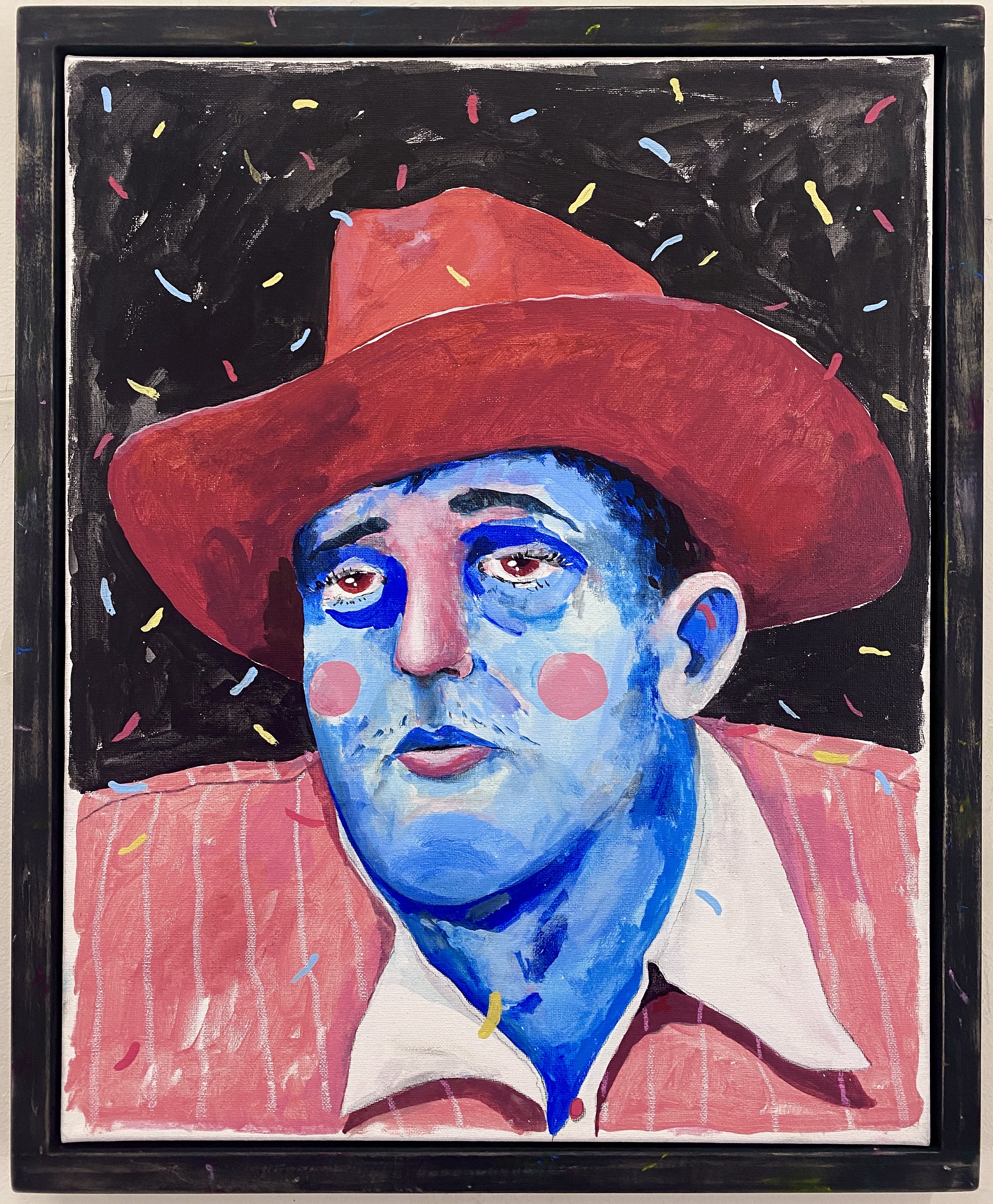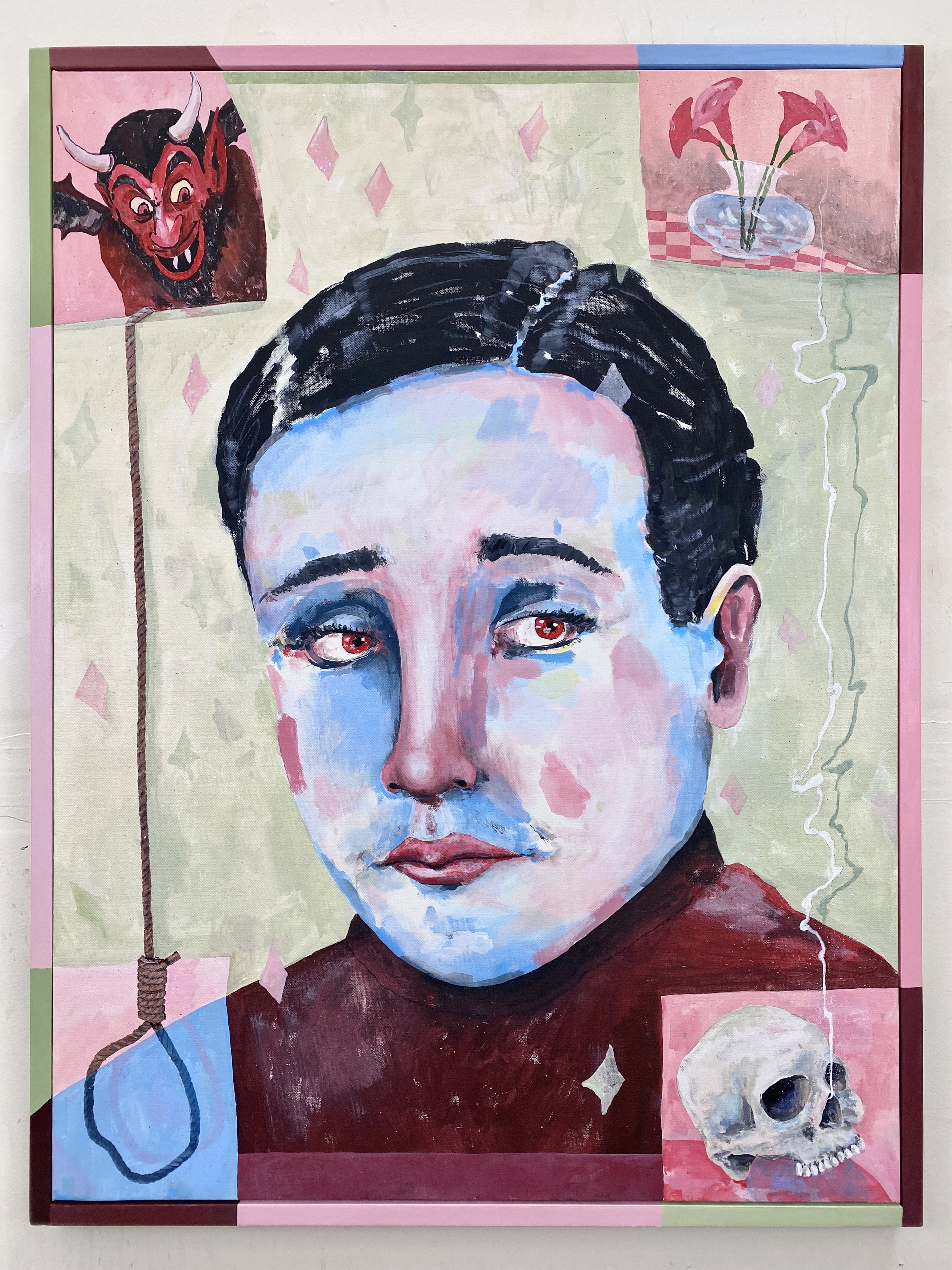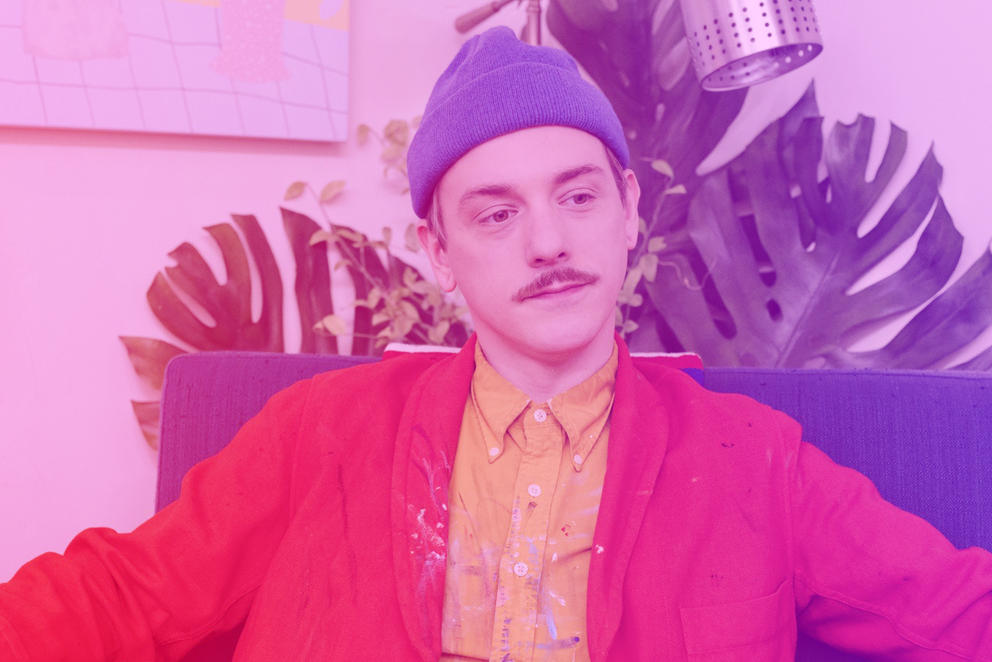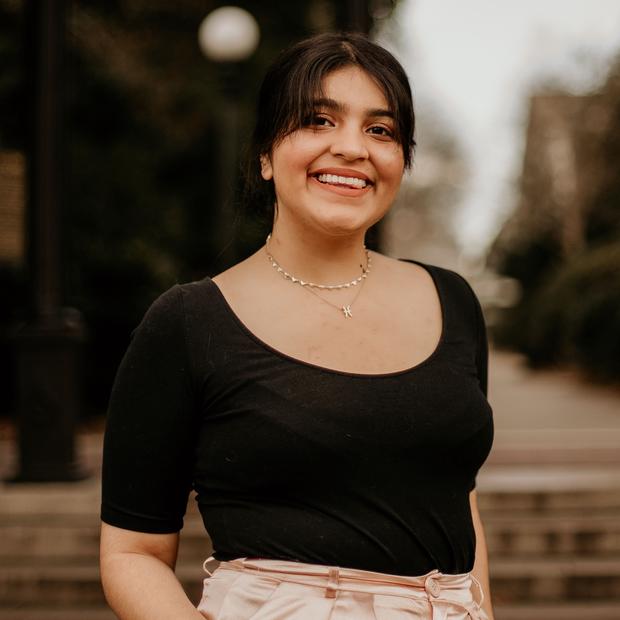Born in Virginia in 1989, Vosika’s family moved to Mukilteo when he was a year old. He had his first solo art show at a community space on Capitol Hill when he was just 17. After graduating from high school, he moved to Seattle and worked at a record store, staying up late nights, painting.
Every year, little by little, he dedicated more time to his creative work and less to day jobs. Now, he estimates, he spends 80 hours a week creating, thinking about and promoting his artwork.
This interview is part of our Summer Artist Talks. Read more artist Q&As in the series.
Looking back at his childhood, Vosika sees evidence that he always wanted to be a different kind of artist.
“One time when I was a kid, I drew a picture of a guy and his eyes were messed up, and I was asking my mom what she thought of it,” Vosika recalls. “She took a pen, changed the eyes and said ‘I like them better when you do them this way.’ I started crying because she ruined my thing.”
Flash forward to 2023, and Vosika still leans into “messed-up” art — with his folk-art-esque paintings of people who don’t exist. His figures often have skin tones in watery blues and reds, their cheeks accented with clown-makeup circles of color. His work emanates a dark sense of humor and sometimes the absurd (see: skeletons hanging out together; legs made of cigarettes).
His series of teeny miniatures features a preponderance of skulls and ghosts — a nod to his adoration of stereotypically scary themes. As someone who has struggled all his life with asthma, he is highly attuned to the permanence of death and the meaning of life.
A decade ago, Vosika did a project called Shake Well Before Use in which he handmade 200 books of watercolors of vibrant red inhalers, diagrams of lungs splattered with water and different dosages of a purple Advair Diskus, a prescription medication to treat asthma.
Vosika has worked in other media — publishing zines (“Portraits of My Feelings”) and sculpting witches, pencils and cigarettes — but right now, he’s focused on painting. With two major shows coming up this summer, he’s making a name for himself in Seattle, and is continuing to focus on being alive.
This Q&A has been edited for length and clarity.
Crosscut: You paint a lot of portraits of imaginary subjects. What is it about portraiture that you like so much?
Vosika: I like painting people’s faces. Portraits are really hard to sell unless you’re doing them of somebody and selling it to them, but I think that there’s a way to do it so it doesn’t look like a real person. Anybody can connect with a painting that doesn’t look like a real person. When it looks too much like somebody, then it’s like, “Who is this?”
Is that why you like to play with skin tones, making them blue or red instead of something more natural?

Totally. Unless I’m being commissioned, I’m not really interested in doing a straightforward portrait because … I don’t really see a point in perfectly rendering somebody.
By facial features, you can kind of tell what somebody’s ethnicity is, but I also don’t want to exist inside the realm of reality. I don’t want it to be definable — let’s take out gender, let’s take out all of that stuff, and just base it off of the expression in the eyes and what they’re doing.
The cowboy is a good example. That one’s a sadder painting to me, so he’s blue. I called it “Last Rodeo.” I felt like I was able to get the message across. This person looks exactly the way I wanted them to feel.
What’s an example of how stories emerge in your work?
With [“Regret Is the Door to Hell”], I made the four corners. I’d been wanting to put a little devil on a painting, and I painted that. Then I was like, “OK, so what's going on here?” That one’s very literal: a skull, so somebody died; if you could, would you sell your soul to the devil in order to bring somebody back?; the noose is you accepting that [bargain]; and the smoke — maybe it’s his spirit — coming out of the skull and going up to that top right is the “ideal” of flowers on a table. That totally came while I was making it, and I love writing a story like that.

So you don’t start the paintings with a story — you let the painting tell you the story?
Coming at something with a preconceived idea — it’s not as fun. I enjoy the adventure. I don’t want to be bored, so I have to figure out a way to paint where I enjoy it and it feeds me creatively. I like the accidents.
A lot of your paintings have death imagery — skulls, cigarettes, ghosts. Why all the symbolism?
I’ve always worked with a lot of death imagery. I suppose it’s for a few different reasons. One is because I’ve always loved haunted houses and the theatrics of ghosts — being scared and the mystery behind why and who and where? Ghost stories? Come on, so much fun!
But also probably because I was very unhappy for a long time, and, to be quite frank, probably felt like I wanted to die. I’m sure that came through in the work.
I’ve always thought a lot about the meaning of life, the meaninglessness and also knowing that I know nothing. And the permanence of death, what we leave behind — a skull is like a lifetime of humanity all summed up into its most basic parts. Death can also be [a symbol] for life.
The cigarettes are usually romantic to me, though.
You also had a successful miniature painting solo show at Party Hat Gallery in 2018 — but it seems like you aren’t doing those much any more.
It would have been really easy for me to be a miniature painter — I would have made a lot more money. I’m sure I would probably have a lot more followers on Instagram. But I never wanted to be defined by a niche thing.
Five years ago, I was painting a lot of ghosts. Everybody was like, “You’re the person that paints the ghosts!” I don’t want to be the person that paints the ghosts. I want to be a painter.
And same with [the miniature paintings]. I didn’t want to be “the one that does the mini-paintings.” [It’s] probably to my disservice; I made so much money [from them]. I paid my studio rent for a year. But it was not really fulfilling and they’re so tiny — I found myself wanting to do this, but bigger.
Seattle is an expensive place to work as an artist. Do you ever feel discouraged by the arts scene here?
I like Seattle because I’ve lived here forever. But honestly, on any given day, I could leave and be like, “Fuck you, Seattle.”
People just don’t really buy art here. I don’t think people value it the way that they do in other areas. I look through windows and I’m like, “You have nothing on your wall except for a poster and a calendar.” It is bewildering.
[In Pioneer Square] I see these hordes of people that are buying tickets for 10 bucks to go to a baseball game and spending $12 on shitty beers. It’s so hard to get somebody to spend $12 on a little art print that is stamped on the back and signed.
So what makes you stay?
What I tell people about Seattle, which is why I live here and why I’ll probably live here for the rest of my life, is you won’t find the best galleries here, you won’t find the best jobs, the weather’s not the best. But you’ll meet your best friends here.
The community in Seattle as far as artists is really small, but it’s so strong. The connection that I’ve experienced from my friends here is so enriching. It’s interesting — when something pops up that feels unfair and kind of weird, [we say] it feels “New York” or it feels “L.A.”
Seattle has got a lot of issues, but the art community does feel friendly and everybody cheers each other on. That makes me want to be a better artist.
Get the latest in local arts and culture
This weekly newsletter brings arts news and cultural events straight to your inbox.



